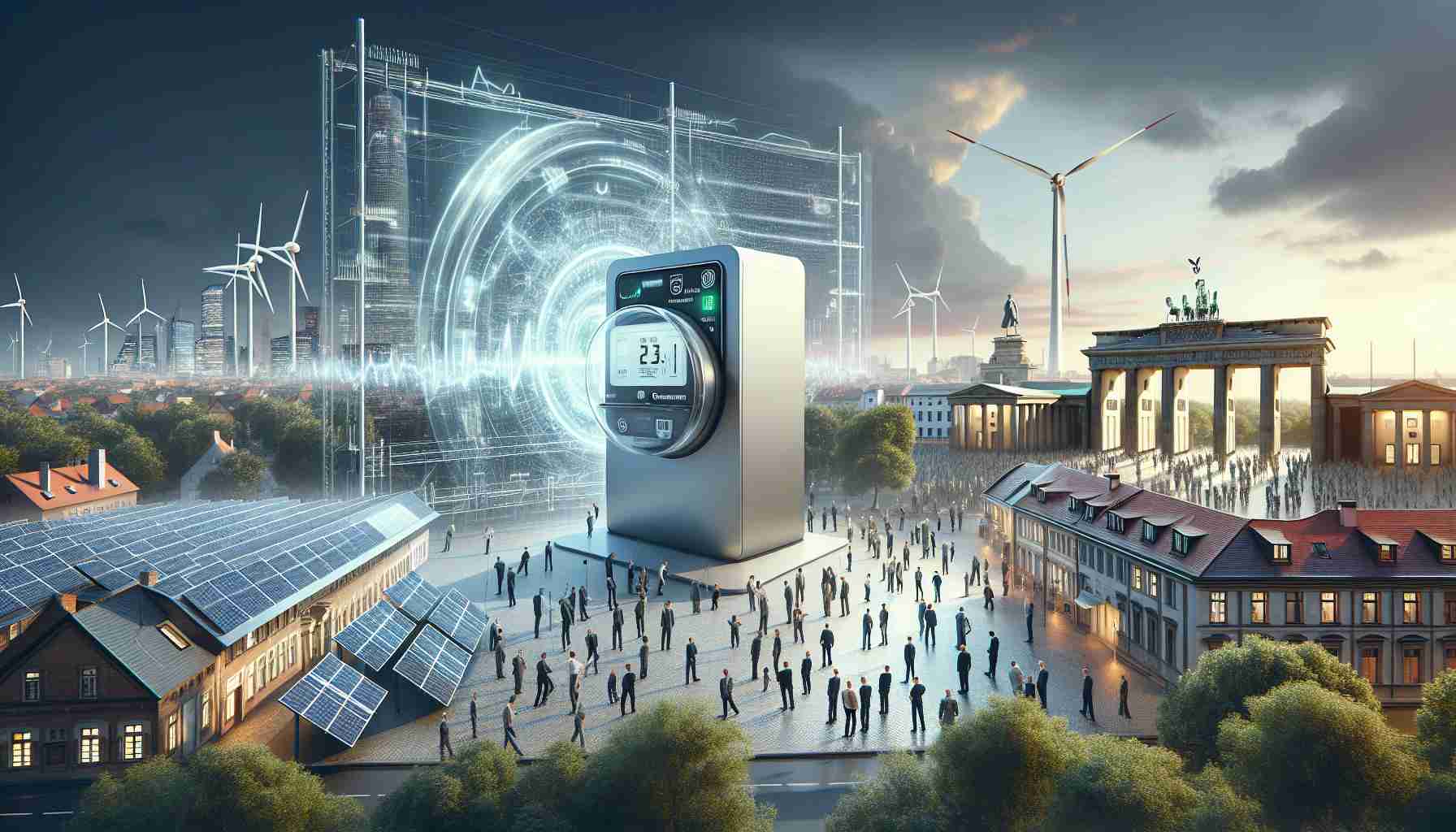- Germany’s energy landscape is on the cusp of transformation, with 15.4 gigawatt-hours of storage capacity in homes paired with heat pumps and electric vehicles, creating a network of flexible energy loads.
- Outdated infrastructure, particularly the slow adoption of smart meters, hampers the integration of these flexible energy sources into the grid.
- “Powerländle,” a pilot project in Baden-Württemberg, spearheaded by Transnet BW and Octopus Energy, is testing solutions to enhance grid stability using the Stromgedacht app to adjust household energy consumption dynamically.
- Initial testing results reveal a shift of 28.5 megawatt-hours, showcasing the economic and sustainable benefits of demand flexibility.
- Implementing a comprehensive smart meter rollout is crucial for unleashing decentralized energy’s potential, thus fostering a resilient and eco-friendly power grid.
In the heart of Germany, a silent revolution in energy consumption waits to unfold. The past few years have seen a significant increase of 15.4 gigawatt-hours of storage capacity installed across residences, paired with the growing use of heat pumps and electric vehicles. These components form a vast network of flexible energy loads, lying dormant, yet brimming with untapped potential.
But this potential remains shackled by an outdated infrastructure. The slow rollout of smart meters stands as a formidable barrier, preventing these flexible loads from playing a pivotal role in balancing the grid. While other nations race ahead with widespread smart meter adoption, Germany lags, missing a crucial piece in its energy puzzle.
A beacon of hope emerges in Baden-Württemberg, where Transnet BW and Octopus Energy pioneer a transformative pilot project dubbed “Powerländle”. This initiative does more than just promise change; it embodies it. Through a groundbreaking app called Stromgedacht, householders can adjust their energy use based on grid needs, seamlessly shifting consumption at critical times. This proactive approach could redefine grid stability and integrate more renewable resources, all while lowering costs for consumers.
Early results are promising. During testing, users shifted 28.5 megawatt-hours of power, preventing disruptions and earning rewards for their participation. This innovative technique not only showcases the economic benefits of flexibility but also demonstrates a sustainable model for the future.
The key takeaway is unmistakable: the path to resilient and eco-friendly energy relies on smart technology. A comprehensive smart meter rollout across Germany isn’t just needed—it’s imperative. It’s time to unleash the potential of decentralized energy, allowing everyone to contribute to, and benefit from, a stable and sustainable power grid.
The Hidden Power of “Powerländle”: How Germany Can Unlock Its Energy Future
How-To Steps & Life Hacks
To fully leverage the benefits of flexible energy loads like electric vehicles, heat pumps, and home battery storage, consumers can employ the following strategies:
1. Install Smart Meters: Begin by installing a smart meter to accurately track your energy usage in real time. This helps adjust consumption to off-peak hours, reducing costs.
2. Use Energy Management Apps: Platforms like Stromgedacht allow you to align your energy usage with grid demands. Download similar apps to monitor and adjust your energy consumption efficiently.
3. Participate in Pilot Projects: Engage in initiatives like “Powerländle” that offer incentives for shifting energy usage during peak times.
4. Optimize Appliance Use: Run major appliances like dishwashers, washing machines, and electric vehicle chargers during off-peak hours.
5. Utilize Time-of-Use Rates: Many energy companies offer lower rates during off-peak times. Adjust your usage habits to take full advantage of these rates.
Real-World Use Cases
– Households with Solar Panels: These homes can store excess energy in batteries and use it during peak periods, saving costs and reducing reliance on the grid.
– Electric Vehicle Owners: By charging EVs during off-peak periods using smart meters, owners save money and help stabilize the grid.
– Corporate Energy Management: Businesses participating in demand response programs can significantly reduce operational costs by shifting usage away from peak times.
Market Forecasts & Industry Trends
According to the International Energy Agency (IEA), the global smart meter market is set to grow, with Europe focusing heavily on infrastructure improvements. It’s expected that by 2025, smart energy solutions will become standard, enhancing grid stability and integration of renewable sources.
Reviews & Comparisons
Comparisons between regions show that those with higher smart meter penetrations, such as the UK and France, have more dynamic pricing strategies and more efficient grid management compared to Germany.
Controversies & Limitations
One significant limitation is data privacy concerns. Many consumers worry about the potential misuse of their energy consumption data. It’s crucial for firms to ensure robust data protection measures.
Insights & Predictions
Experts predict that widespread adoption of smart meters in Germany will dramatically increase the flexibility of energy consumption and integrate more renewables, helping the country achieve its climate goals.
Pros & Cons Overview
Pros
– Cost Savings: Shifting consumption to off-peak times can lower energy bills.
– Grid Stability: Helps balance supply and demand for renewable energy.
– Environmental Benefits: Increases capacity for renewables.
Cons
– Data Privacy: Potential misuse of consumption data.
– Initial Costs: Installation of smart meters requires an initial investment.
Actionable Recommendations
1. Advocate for Smart Meters: Contact local utilities or government representatives to accelerate the rollout of smart metering technology.
2. Explore Funding Options: Check for subsidies or government programs assisting with smart meter installation.
3. Promote Awareness: Implement energy-saving campaigns to educate on the benefits of flexible energy consumption.
For more information on energy efficiency technologies, visit the International Energy Agency or Transnet BW.
By actively participating in the energy transition, we can unlock a sustainable and stable energy future, tackling both economic and environmental challenges head-on.








